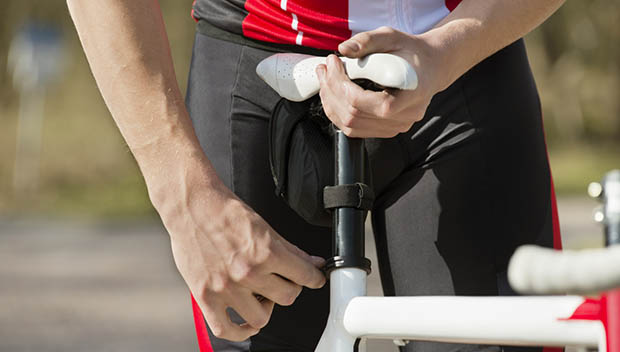
Finding the correct saddle height is arguably the most important adjustment a cyclist can make. It can improve performance, prevent injury, and make you more comfortable on the bike.
The tricky part is finding the right height for you. Depending on who you talk to or what article you read, you'll probably get different advice. I've been fitted professionally three different times, and each time my position was set up with slight variations.
Why is this? The truth is, there's no one right method for every person. The key to finding the correct saddle height is to follow basic guidelines and make small adjustments as needed.
Let's take a look at the four most common methods for dialing in saddle height and the pros and cons of each test.
More: 10 Bike Fit Myths Debunked
What is the Correct Saddle Height?
Most cycling literature agrees that a saddle height that allows for 25 to 35 degrees of knee flexion when the pedal is at bottom dead center is optimal.It's more common for cyclists to err on the side of a saddle being too low because it's the position that's more comfortable. But riding for long periods in this position can cause overuse injuries to the quadriceps, the patella tendon and the hip flexors.
On the other hand, a saddle that's too high can cause overuse injuries to the hamstring tendons, the iliotibial band and the muscles of the calf. While there's a pretty big difference between 25 and 35 degrees of knee flexion, it's important to stay within this range to avoid injury and maintain optimal power output.
More: The Principles of an Aerodynamic Bike Fit
The Heel Method
How: With your shoe on, get on your bike and place the pedal at the bottom dead center of the pedal stroke (six o'clock). With your heel on the platform of the pedal, raise or lower the seat until your leg is completely straight.Pros: This method is easy and can be completed at home with little to no help. No additional equipment is needed.
Cons: This is one of the least scientific methods for dialing in the correct seat height. Individual differences in femur, tibia and foot length also aren't accounted for, and usually leads to a seat height adjustment that's too low.


